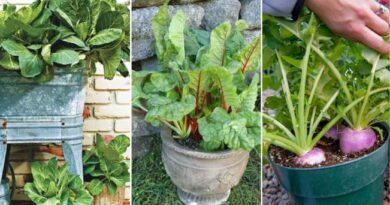Top 17 Berry Varieties You Can Easily Grow in Your Garden
If you’re eager to start cultivating fruits at home but find yourself new to the world of home gardening, fear not! This guide will help you navigate your way through the basics, ensuring you start off on the right foot. Among the simplest and most rewarding fruits to grow, especially for beginners, are berries. Not only are they relatively low-maintenance, but they also adapt well to smaller spaces like containers or vertical gardens, making them perfect for balconies or patios. With just a little care and a few adjustments, you can enjoy fresh berries year-round without the need for a sprawling garden.
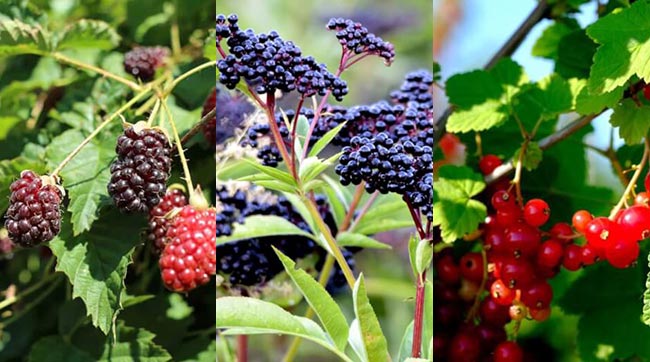
For example, blueberries are one of the most popular and antioxidant-rich fruits you can grow. These plants require a little patience as they grow slowly, reaching their full size only after several years. However, the wait is well worth it when you start reaping the rewards of abundant, nutritious fruit. When planting blueberries, it’s essential to create an environment with good drainage and access to plenty of sunlight—either full or partial exposure. Similarly, raspberries thrive in well-drained soil and require consistent sunlight throughout the year. Other berry options include loganberries and gooseberries, which enjoy the same growing conditions as blueberries and raspberries, allowing you to mix and match your berry choices based on your preferences. Simply select your favorites and set up a productive growing environment for them!
#1 Blueberries
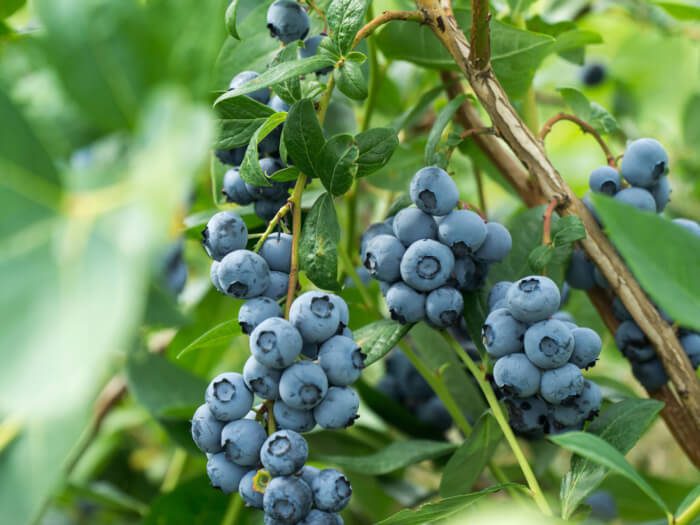
Blueberry plants grow gradually, and it may seem like they’re not progressing much in the first few years. These bushes can take up to a decade to fully mature, but this extended growth period also means that they are long-lived. Expect to wait two or three years before the first harvest, with the yield increasing significantly after the fifth year. During this period, the plants themselves are quite ornamental, adding a touch of beauty to your garden while you wait for the berries to appear.
Key growing tips for blueberries:
- Blueberries thrive in full sunlight.
- They require acidic soil—often referred to as “blueberry soil.”
- Planting two or more varieties together improves pollination and fruit yield.
- Be patient—fruit production doesn’t begin until the second or third year.
- Prune the plants each winter to remove old, weak, or dead growth to ensure healthy, productive bushes.
#2 Boysenberries
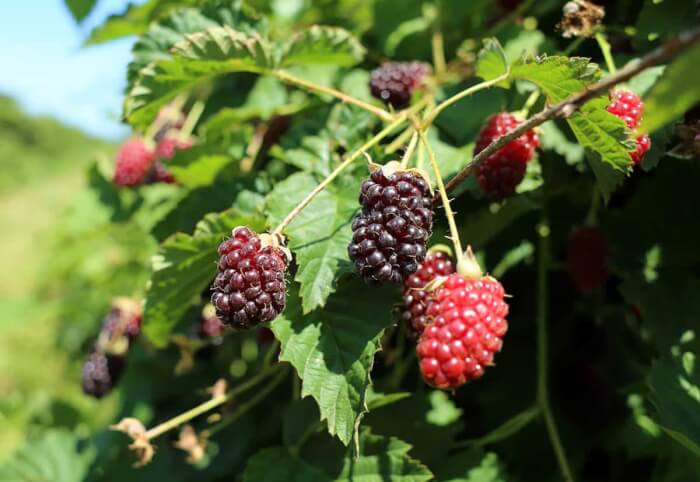
If you enjoy raspberries, blackberries, and loganberries, a boysenberry might just be your perfect new berry to grow. This hybrid fruit combines the best characteristics of all three, resulting in a deliciously tangy berry that is perfect for jams, pies, or fresh eating. Boysenberries are bramble bushes, meaning they have a tendency to spread quickly. Because of this, they require space and a bit of management to keep them from overtaking the garden.
How to grow boysenberries:
- Choose a sunny location with well-draining, sandy loam soil that has a slightly acidic pH (5.8-6.5).
- Avoid planting near previous crops like tomatoes or potatoes, which can harbor soil-borne diseases such as verticillium wilt.
- Ideally, plant boysenberries around four weeks before the last frost in your area.
#3 Cranberries
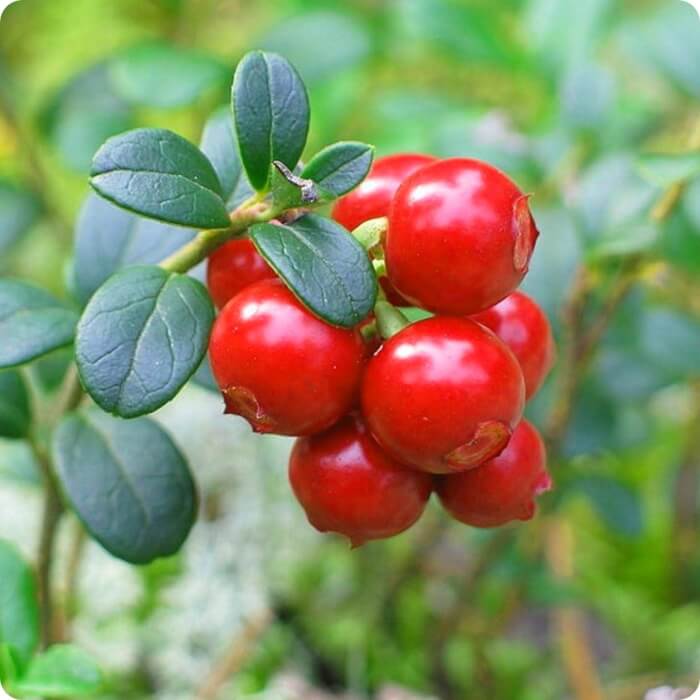
You may think cranberries are only for large commercial farms, but it’s entirely possible to grow them at home with the right setup. These iconic berries require cold winters to thrive—specifically, they need at least three months of temperatures between 32°F and 45°F to produce fruit.
Essential requirements for growing cranberries:
- Full sun exposure is crucial for strong growth and high yields.
- Cranberries prefer highly organic, acidic soil—peat moss is often the best choice.
- They need consistently moist soil, but be cautious not to let it become waterlogged.
- While cranberries don’t require heavy fertilization, they do benefit from periodic amendments to the soil.
#4 Huckleberries
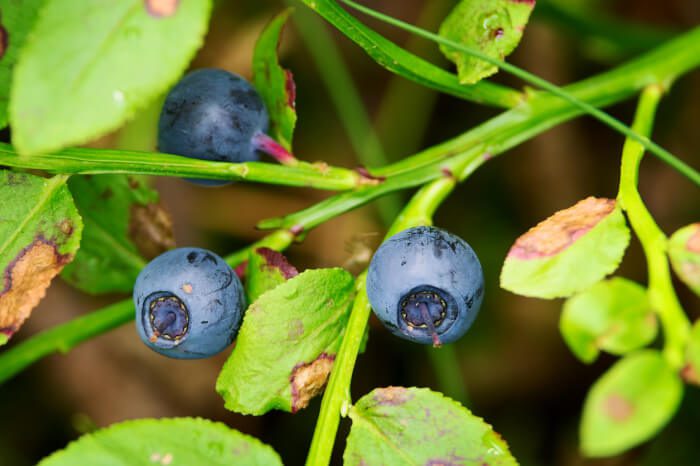
Huckleberries, often mistaken for blueberries in some regions of the United States, are small, round, and packed with flavor. These berries have a distinct tangy taste that makes them a favorite for jams, syrups, and desserts. Although they share some characteristics with blueberries, huckleberries are a unique fruit species that grows best in cooler climates.
Why grow huckleberries?
- These berries are rich in vitamin C, manganese, and antioxidants, making them a nutritious addition to your garden.
- They are easy to grow, requiring little maintenance once established.
- Huckleberries are cold-tolerant, and their flavor only improves if they’re exposed to light frosts.
- Their small, shrubby plants are also valued for ornamental purposes, making them a double-duty plant in the landscape.
#5 Currants and Gooseberries
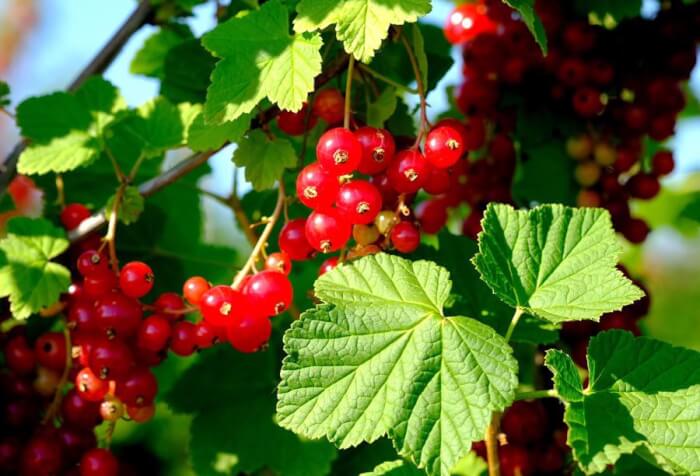
Currants and gooseberries are often overshadowed by other more popular fruits, but they are incredibly hardy and productive, with some varieties capable of yielding up to four quarts of fruit annually. These berries grow well in both full sun and partial shade, but they produce the most fruit when exposed to plenty of sunlight. Gooseberries, in particular, are a bit spiny, so regular pruning is essential to maintain healthy growth.
Tips for growing currants and gooseberries:
- Space your plants at least three feet apart to give them room to grow.
- Most currants and gooseberries are self-pollinating, so you can grow just one variety and still get fruit.
- Prune annually to remove weak or dead growth and to encourage strong, productive canes.
- Expect fruit in 1-3 years after planting.
#6 Raspberries
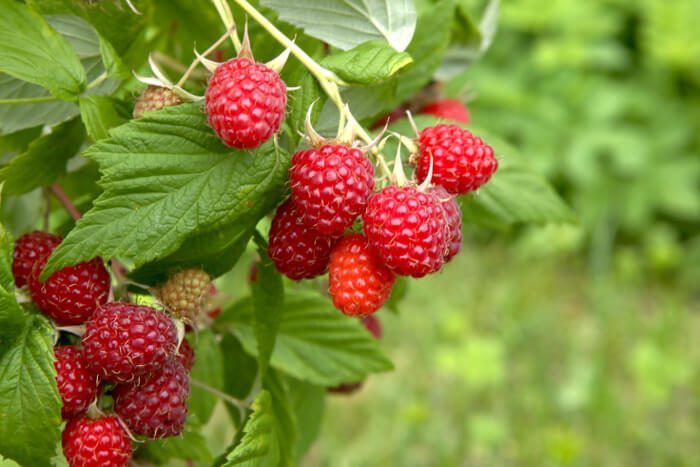
Raspberries are one of the easiest and most rewarding fruits to grow, producing an abundance of sweet, juicy berries throughout the summer. To ensure the best harvest, prune your raspberry bushes regularly to remove old canes and keep the plant productive.
Essential tips for raspberry cultivation:
- Raspberries require full sun and well-drained soil.
- Plant them 3-4 feet apart, and set up a support system such as posts and wire to keep the canes upright.
- Water regularly, particularly during dry spells, to ensure consistent berry production.
- Prune annually to remove old growth and maintain strong, healthy plants.
- Be mindful of pests like rabbits, which are particularly fond of raspberry canes in the winter—installing a chicken-wire fence around your plants will help keep them safe.
#7 Loganberries
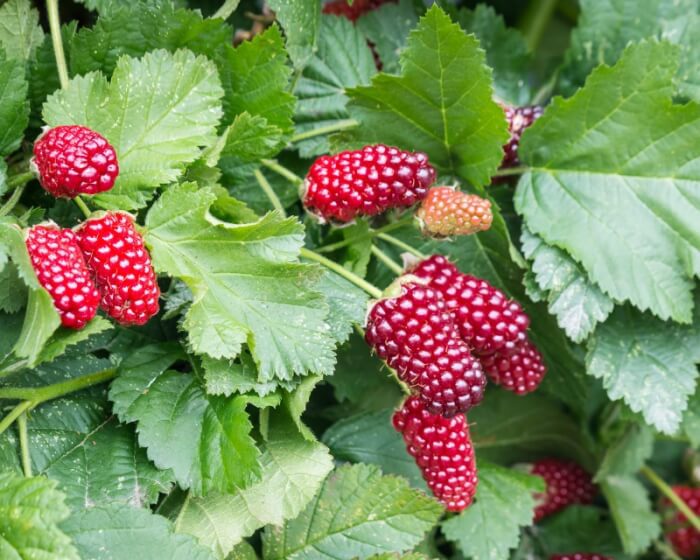
Loganberries are a hybrid fruit resulting from the cross between raspberries and blackberries. These berries have a slightly longer shape compared to blackberries, and their color ranges from dark purplish-red to deep maroon. The taste is a wonderful combination of both raspberry and blackberry flavors, making them ideal for a variety of culinary uses, including jams and pies.
How to grow loganberries:
- Loganberries thrive in full sun and well-drained, fertile soil.
- Like their parent plants, they are bramble bushes, so be prepared for them to spread.
- Regular pruning will keep the plant manageable and productive.
#8 Aronia Berries
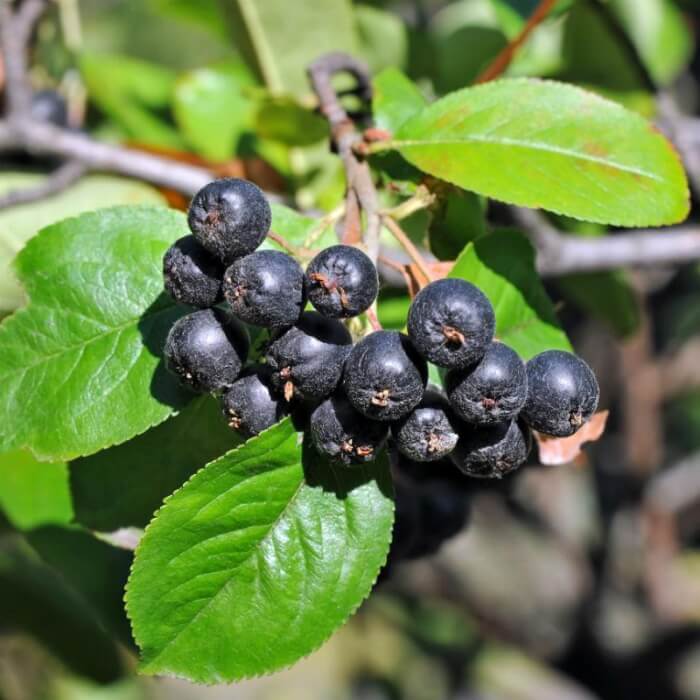
Aronia berries, also known as chokeberries, are gaining popularity not only for their health benefits but also for their ornamental value in the garden. These hardy, easy-to-grow shrubs are perfect for home landscapes and can be planted in rows or as individual specimens. Aronia berries are rich in antioxidants and are commonly used to make juices, jams, and syrups.
Key growing tips for Aronia berries:
- These plants are incredibly hardy and can thrive in most parts of the country.
- They grow best in full sun to partial shade and tolerate a variety of soil types.
- Aronia shrubs can be used in hedges or as standalone plants in garden borders for added aesthetic value.
#9 Gooseberries
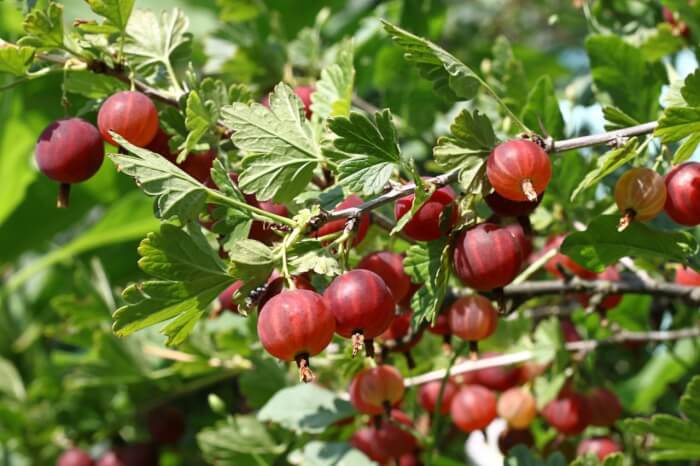
Gooseberries are another fantastic choice for home gardens, known for their tart and tangy flavor. They thrive in well-drained, nutrient-rich soil that retains moisture without becoming waterlogged. If the natural soil conditions in your garden aren’t ideal for gooseberries, improve them by adding organic compost or well-rotted manure.
Tips for successful gooseberry cultivation:
- Gooseberries prefer rich, well-drained soil with a slightly acidic pH.
- Regular pruning is essential to keep the plant healthy and productive.
- Choose a sunny spot to maximize fruit production, though they can tolerate partial shade.
#10 Wineberries
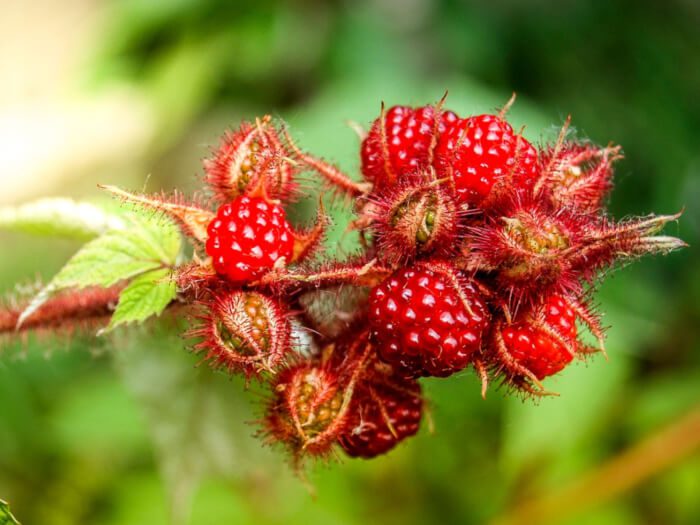
Wineberries are an intriguing fruit choice for gardeners looking to expand their collection. These raspberry-like berries are slightly larger, with a deep pinkish-orange hue and a balance of sweetness and tartness. Perfect for making preserves, wineberries add a unique twist to any dessert recipe.
How to grow wineberries:
- Like raspberries, wineberries prefer full sun and well-drained soil.
- They spread rapidly, so regular maintenance is required to prevent them from overtaking the garden.
- The berries ripen in late summer and are perfect for fresh eating or preserving.
#11 Elderberries
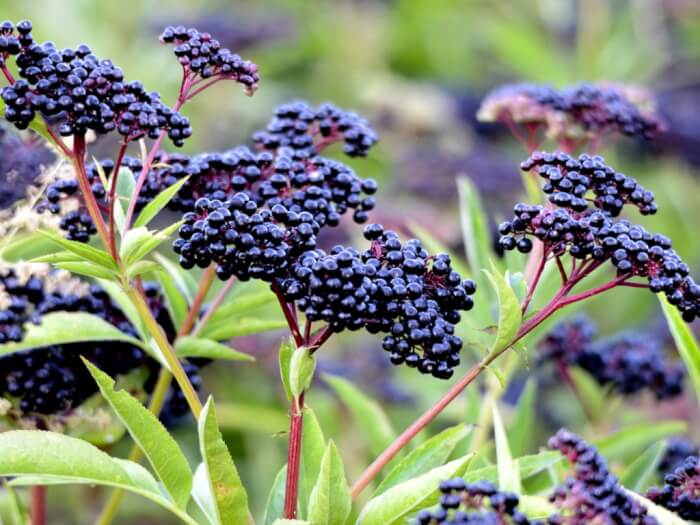
Elderberries are a powerhouse of nutrition and a fantastic addition to any home garden. These small, dark purple berries are not only known for their rich, tart flavor but also for their medicinal properties. Elderberries have long been used in traditional remedies, particularly for boosting the immune system and alleviating cold symptoms. If you’re looking to grow something that’s both functional and flavorful, elderberries should be on your list.
Growing tips for elderberries:
- Elderberry bushes prefer full sun but can tolerate partial shade.
- They grow best in moist, well-drained soil that is rich in organic matter.
- Elderberries thrive in soil with a slightly acidic to neutral pH.
- Be aware that elderberry plants can grow quite large—up to 6 to 12 feet tall—so make sure you have the space to accommodate them.
- These plants benefit from being planted in a location that offers good air circulation, as they are prone to fungal infections if crowded.
- While elderberries can self-pollinate, planting two varieties will lead to better fruit production.
Harvesting elderberries typically occurs in late summer, and the small clusters of berries are best used in cooking, syrups, jams, or wines. However, it’s important to note that raw elderberries contain toxins that must be cooked out before consumption. With just a bit of care, elderberries can become a fruitful and beneficial plant in your garden.
#13 Wonderberries
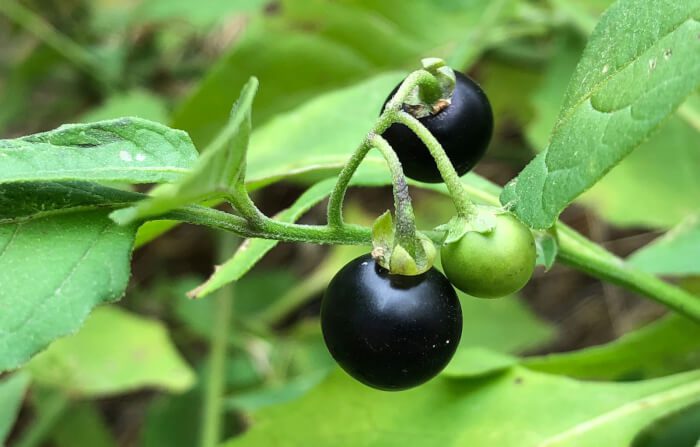
Wonderberries, sometimes referred to as “wonderberry plants,” are a fascinating hybrid fruit that combines the best of several berries, including the nightshade family’s edible fruits. Often regarded as a novelty berry, wonderberries are small, round, and glossy, with a flavor that is a mix between a sweet tomato and a mild blueberry. These berries are often grown as ornamental plants, but they’re perfectly edible and can be used in a variety of dishes.
Growing tips for wonderberries:
- Wonderberries grow best in full sun, requiring at least 6 hours of direct sunlight each day for optimal fruit production.
- They thrive in well-draining, fertile soil with a neutral pH.
- While wonderberries can tolerate some drought, regular watering will promote healthier growth and larger fruit yields.
- Since they are nightshade family plants, wonderberries can be sensitive to pests and diseases like aphids or blight. Keeping your plants well-spaced and providing proper air circulation can reduce these risks.
- Wonderberries do best when planted in containers, especially in areas with shorter growing seasons or cooler climates.
These plants are hardy and easy to grow, making them a great option for gardeners looking to try something unique. The berries can be eaten fresh or used in jams, sauces, and even smoothies. Their decorative foliage and striking appearance also make them a welcome addition to garden borders.
#15 Strawberries
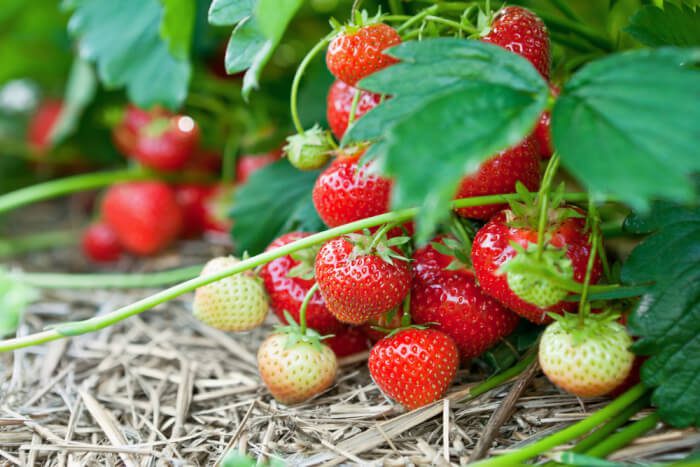
Strawberries are one of the most beloved fruits in home gardening. Their sweet, juicy berries are a perennial favorite, and growing them at home can be incredibly rewarding. Whether you’re picking them fresh off the vine or turning them into jams and desserts, strawberries are versatile and easy to grow. They can be cultivated in various forms, such as in hanging baskets, raised beds, or traditional garden plots, making them perfect for any garden size.
Essential tips for strawberry cultivation:
- Strawberries require full sun to produce the most fruit—aim for at least 6-8 hours of sunlight daily.
- Plant your strawberry plants in well-drained, fertile soil. If your soil is heavy or clay-like, amend it with organic compost or sand to improve drainage.
- These plants thrive in slightly acidic soil, with a pH range between 5.5 and 6.5.
- Strawberries can be grown as annuals or perennials. If growing them as perennials, it’s important to cut back old plants and thin them out annually to prevent overcrowding.
- They are great for container gardening, and they do well in hanging baskets, allowing you to save space while still producing a generous harvest.
- Regular watering is key, but be careful not to waterlog the plants—maintain evenly moist soil without saturation.
With varieties ranging from June-bearing, everbearing, and day-neutral, you can choose the type of strawberry that best suits your growing conditions and harvesting preferences. Whether grown in beds or containers, strawberries provide a bountiful harvest from late spring to early summer, depending on the variety.
#16 Serviceberries
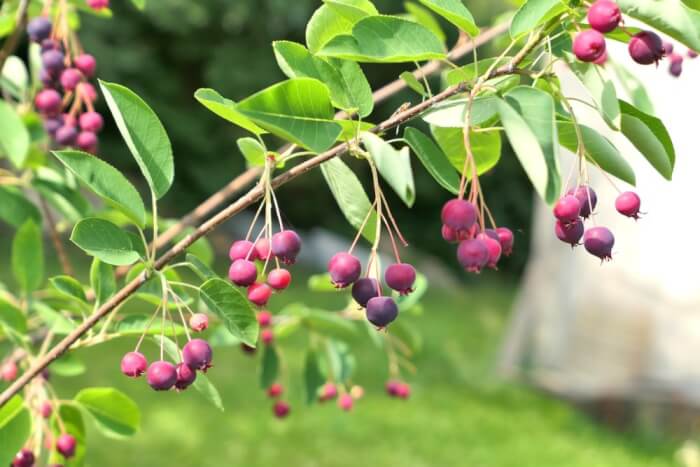
Serviceberries, also known as juneberries or saskatoon berries, are a versatile and hardy shrub that can be an excellent addition to any home landscape. The small, blueberry-like fruits ripen in late spring to early summer, providing a quick and delicious treat. These berries are not only edible but also packed with vitamins, minerals, and antioxidants, making them a nutritious snack. Beyond their culinary uses, serviceberries are also valued for their ornamental qualities, with attractive foliage and beautiful white flowers in the spring.
How to grow serviceberries:
- Serviceberries thrive in full sun to partial shade, but they tend to produce more fruit when planted in areas with at least 6 hours of direct sunlight.
- These shrubs are adaptable to a variety of soil types but prefer well-draining, moderately fertile soil with a neutral to slightly acidic pH.
- They are relatively low-maintenance and drought-tolerant once established, but regular watering during dry spells will help the plants remain productive.
- Serviceberry plants can be pruned to maintain shape and encourage better air circulation, though they naturally form a tidy, upright habit.
- These shrubs are relatively pest-resistant, but watch for common berry pests like birds or insects, which may be attracted to the fruit. A protective netting or a bit of vigilance can keep your harvest safe.
Serviceberries can be eaten fresh, used in jams and jellies, or incorporated into baked goods. They are also popular in pies and syrups. In addition to the edible fruit, the plants provide excellent fall color and beautiful blossoms, making them a double-duty shrub for your garden.
#17 Blackberries

Blackberries are a classic choice for home gardeners who want to enjoy bountiful harvests of sweet, juicy berries throughout the summer. These sprawling, thorny bushes can quickly fill up a garden, but with the right care, you can tame them to fit into any space. Blackberries are packed with nutrients and antioxidants and can be used in a variety of recipes, from pies to smoothies to preserves. If you’re looking for an easy-to-grow, high-yielding fruit, blackberries are a great choice.
Growing tips for blackberries:
- Blackberries need full sun for at least 6-8 hours a day to thrive and produce the best fruit.
- They grow best in slightly acidic, well-drained soil. Amending your soil with organic matter like compost will encourage healthy root development and higher yields.
- These plants can grow in both upright and trailing forms, so you can choose between erect, semi-erect, or trailing varieties depending on your available space and gardening preferences.
- Blackberries are vigorous growers, so make sure to provide a strong support system such as a trellis, fence, or even a wire system to keep the canes upright and manageable.
- Water your blackberry plants consistently, especially during dry periods, but ensure good drainage to prevent root rot.
Regular pruning is essential to maintaining blackberry plants and ensuring a plentiful harvest. Remove old, non-productive canes and cut back new growth to encourage fruiting. With proper care, blackberry bushes can produce an abundant harvest from mid-summer through early fall, providing fresh fruit for weeks.
Whether you grow them for their sweet taste, high nutritional value, or simply as a lovely ornamental plant, blackberries are a great investment for any home gardener.
With these berry varieties, you can enjoy a variety of fruits throughout the year while adding color, texture, and health benefits to your garden. Whether you have a large garden or just a small balcony, there’s a berry plant for every space and taste. Simply pick the ones that resonate most with you, and get ready to enjoy a fruitful harvest!

